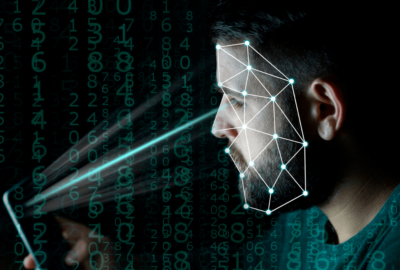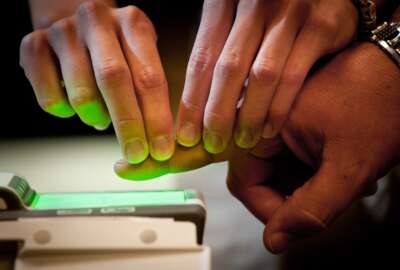DoD, DHS vet facial recognition tools for reliability in effort to build trust
Both agencies are taking steps to vet the security and reliability of the facial recognition tools they’re using, in order to build public trust in these tool...
The departments of Defense and Homeland Security see facial recognition technology as a necessary component to stay ahead of emerging threats.
But first, both agencies are taking steps to vet the security and reliability of the facial recognition tools they’re using, in order to build public trust in these tools and address concerns from Congress.
John Stanley, an independent consultant working on behalf of DoD’s Under Secretary for Research and Engineering (R&E), said the department biometrics and identity tools are on track to support joint all-domain operations.
But in order to accelerate the adoption of these tools, Stanley said DoD needs to establish public trust in these tools and ensure that data use and protection adhere to laws, policies, standards and protocols.
“Unleashing the power of biometric and forensic tools, and integrating them with information platforms, artificial intelligence and other relevant data requires biometric and forensic tools be built to garner trust among policymakers and end-users alike,” Stanley said Tuesday at AFCEA’s Federal Identity Conference.
Along with an increasing need for data, Stanley said DoD is relying more on the National Institute of Standards and Technology to provide standards that will ensure data interoperability with other federal agencies.
“Standards enable the open exchange of biometric data between different agencies and their biometric systems, which are built by different companies, providing guidance on how biometrics systems are to be tested, and how results should be calculated and reported so that performance of one system can be compared to the performance of another system,” Stanley said.
DoD is looking at biometrics to assist in the attribution of threats posed by adversaries, but Will Graves, DoD’s chief engineer and product manager for biometrics, said facial recognition remains a challenge to deploy, considering how the department operates in environments that are always changing.
“Biometrics and forensics obviously help the analysis and decision-making, but… they’re always associated with something else, and it’s that something else that adds the complexity, because you can’t take away the context of the collection,” Graves said.
The Department of Homeland Security, meanwhile, is relying more heavily on facial recognition technology to vet the identity of non-U.S. citizens traveling in and out of the country.
But in the absence of national or international standards for this technology, the Science and Technology Directorate (S&T) at DHS is taking steps to ensure that commercially available tools work effectively regardless of the race, age or gender of the subject.
DHS S&T since 2018 has held annual biometric technology “rallies” along with industry partners through cooperative research and development agreements.
Yevgeniy Sirotin, the technical director for SAIC’s Maryland test facility, working in support of DHS S&T, said these rallies help the agency flag high failure rates, systems that are too slow or inefficient for the agency to implement.
As part of this testing, DHS S&T last year found that face masks worn to prevent the spread of COVID-19 can reduce the reliability of some commercial facial recognition tools.
“These analyses have shown that although some systems test well with diverse demographic groups, some performance differences do persist in both acquisition and matching components of current commercial biometric systems. These require careful evaluations, especially in light of the constantly shifting environment in which biometric technologies are deployed,” Sirotin said Tuesday during AFCEA’s Federal Identity Conference.
During last year’s rally, when DHS S&T gathered a diverse pool of 582 volunteers, the median system identified 93% of volunteers without masks, but could only identify 77% of volunteers who wore masks.
The highest-performing system during the test, however, could still match 96% of volunteers wearing masks, but no system could effectively identify 95% of volunteers who identified as Black or African American and wore a mask. Sirotin said DHS S&T will carry out additional research to investigate the root causes of this gap in performance.
“When you put on a face mask, it really disrupts the local contrasts around the face, and that could have been responsible for some of the differentials we’ve seen, especially when you have a contrast of a very bright white mask against maybe a darker skin tone,” he said.
Customs and Border Protection uses existing biometric information from visa photos and U.S. passports. Facial recognition eliminates the need for manual identity checks and fingerprinting each time a foreign national returns to the U.S.
CBP claims facial recognition systems have flagged 885 imposters using someone else’s travel documents at land and air ports of entry, as well as more than 107,000 visa overstays.
DHS S&T will hold this year’s rally in September at the Maryland Test Facility in Upper Marlboro, Maryland.
DHS is hardly alone in fielding this technology. The Government Accountability Office found 18 of the 24 CFO Act agencies were using facial recognition technology for digital access or cybersecurity purposes, law enforcement or physical security.
GAO found that 14 agencies authorized employees to unlock their agency-issued smartphones using facial recognition technology, while the General Services Administration and Social Security Administration told GAO they were running pilots that would allow employees to access government websites like Login.gov via facial recognition technology.
10 agencies told GAO they expect to expand their use of facial recognition technology through fiscal 2023, and reported ongoing work on facial recognition-related research and development, such as the impact of mask-wearing during the COVID-19 pandemic and detecting image manipulation.
“What is an effortless skill in humans has proven difficult to replicate in machines, but computer and technology advancements over the past few decades have increased the overall accuracy of automated facial recognition,” auditors wrote.
GAO completed the report at the request of the House Oversight and Reform Committee leadership as well as House Judiciary Committee ranking member Jim Jordan (R-Ohio). This marks the latest in a series of GAO reports looking at federal adoption of facial recognition technology.
Copyright © 2024 Federal News Network. All rights reserved. This website is not intended for users located within the European Economic Area.
Jory Heckman is a reporter at Federal News Network covering U.S. Postal Service, IRS, big data and technology issues.
Follow @jheckmanWFED






